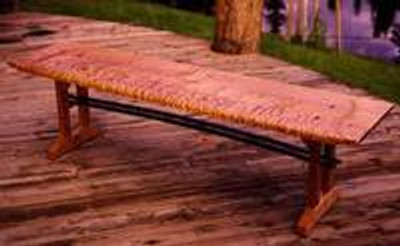Tone wood: What You Need to Know
7th Jan 2015

Expert luthiers and highly- trained musicians know that different kinds of instruments give off their best sounds when the right wood is used. This is why they pay special attention to the type of tone wood used for the various parts of guitars, violins, lutes and other stringed instruments.
Why Choose Tone wood?
Tone woods are harvested from carefully chosen trees, harvested at a specific time, processed meticulously and dried by aging in climate-controlled environments.
First, a luthier inspects the tree or trees to be cut. They make sure that they get the straightest parts of the tree, without gnarls or breaks because these tend to resonate well. Old trees are preferred because their cells have already reached the required maturity and density to be considered as tone wood. Once the trees are turned into lumber, they are cut into specific thicknesses and dried thoroughly. It sometimes takes several years to dry each piece of wood.
But why go through all these steps just for a piece of wood?
Those who are not aware of the importance of the type of wood for instrument making might say that all wood can be made into musical instruments. Come to think of it, a stringed instrument is made predominantly of wood, strings and a few metal parts. A guitar, for example, produces sound by passing the string’s vibrations into a hollow chamber. This is why you need good, resonant wood to produce a sound that’s rich and mellow.
Try tapping on the top part of a guitar made of plywood and laminate top; then tap on a solid wood guitar. Do you notice how much deeper and resonant the sound from the latter is?
Sure, craftsmanship has a lot to do with creating world-class instruments. But, as the old saying goes, “A carpenter is only as good as his tools”. Similarly, a luthier can only craft the best stringed instrument out of the highest quality of wood.
Types of Tone Wood
Like most products of nature, no two slabs of wood are alike. They vary in grain, stiffness, flame figure and color. Here are some of the most popular exotic wood of this type, their characteristics and origins:
Walnut
A lot of luthiersprefer to use walnut because of their malleability and beauty. Yes, they’re easy to bend and finish. Not to mention that they smell great! Walnut is one of the woods that can be classified as “jack of all trades”. Not only are they good for instruments – they make good flooring and furniture as well.
Where does it come from? There’s the English or Persian walnut which have their origins in Persia. Due to the great demand for their beautiful wood, these types of walnut trees are now cultivated and grown in Asia, specifically China as well as in other parts of the world.
On the other hand, California is home to the black walnut, the famed source of the Claro walnut. It is highly-esteemed by luthiers for its unique, mottled appearance that enhance its high-end look. Claro walnut is found on the crotch area of the walnut tree.

Ziricote
To the untrained eye, ziricote might pass off as ebony for its dark gray color naturally adorned with black streaks. This gives it a spider web appearance. This Mexican wood is very rare and beautiful. It has natural oils which can prove to be difficult to work on. But in the hands of very able luthiers, ziricote is transformed into a beautiful piece of musical instrument. No wonder luthiers pay top dollar for it.
Spruce
If you think that spruces are only good for Christmas trees, think again. Some people even think that spruces are boring to look at. But to a skilled luthier, these trees produce some of the best custom wood for acoustic and jazz guitars. Sitka, Engelmann, Adirondack and European spruce are the most preferred by musicians and luthiers alike. And the great thing about spruces is that you can find them in almost all the four corners of the globe.
Ebony
If there’s one wood that exudes beauty and elegance, then we’d say it’s ebony. It’s very tough and durable, lead guitarists actually prefer it over rosewood. It’s one of the most expensive exotic woods nowadays not only because of its beauty but also due to its dwindling supply. In fact, it has already been enlisted as one of the soon-to-be-extinct types of timber. Three types are used for musical instruments: Ceylon Ebony or East Indian Ebony (natives of India and Sri Lanka) Indonesia’s Makassar Ebony and Madagascar’s Ebony.
Mahogany
Our ancestors have long discovered that when it comes to musical instruments, mahogany is the best material. It is resonant, beautiful and durable. But due to illegal logging and severe exploitation, the processing of mahogany has been banned since 2003. The mahogany we have now usually come from Asian regions.
Maple
Maples are usually found in Europe and Asia. Its toughness, even-grained texture and good tonal qualities make it ideal for musical instruments. Sometimes, they come with beautiful ink-like patterns. These were naturally created by the fungi that thrived in the body of the tree where it came from.
Rosewood
There was a time when Brazilian rosewood was the most preferred type for guitarfingerboards. But due to its close-to-extinction status, the Rosewood that’s used for instruments today comes from India or Bangladesh.
Due to their superior qualities, instruments made of tone wood are quite expensive. To make sure that you are getting top value for your money, deal only with trusted manufacturers of domestic wood and exotic wood.
These are the highest quality of tone woods that luthiers and skilled musicians prefer. Due to their beauty and rarity, they are not always available in the market. If you want to purchase authentic domestic wood or exotic wood at wholesale prices, you’ll have to make reservations with trusted wood manufacturers.

